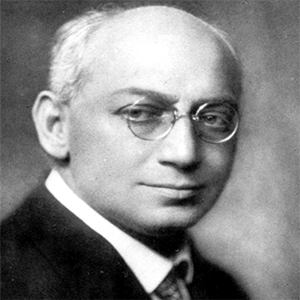Sandor Ferenczi’s concept of the dialogue of unconsciouses: a clinical example

Submitted: August 1, 2022
Accepted: April 17, 2023
Published: May 2, 2023
Accepted: April 17, 2023
Abstract Views: 1066
PDF: 268
HTML: 43
HTML: 43
Publisher's note
All claims expressed in this article are solely those of the authors and do not necessarily represent those of their affiliated organizations, or those of the publisher, the editors and the reviewers. Any product that may be evaluated in this article or claim that may be made by its manufacturer is not guaranteed or endorsed by the publisher.
All claims expressed in this article are solely those of the authors and do not necessarily represent those of their affiliated organizations, or those of the publisher, the editors and the reviewers. Any product that may be evaluated in this article or claim that may be made by its manufacturer is not guaranteed or endorsed by the publisher.
Similar Articles
- Victoria Klimkowski, Sofia McRae, Alexia Blick, Laurence Beaulieu, J. Reese S. Handley, Anara A. Hopley, Caroline A. Hyde, Devika M. Jain, Sylvia Kolodziejczyk, Josiane Laliberté, Alexa Lévesque, Lara M. Masri, Anya M. Monet, Reagan S. Nediu, Rachel Valihrach, Giorgio Tasca, Models of practice and training in psychotherapy: cross-national perspectives from Italy and Canada , Research in Psychotherapy: Psychopathology, Process and Outcome: Vol. 27 No. 1 (2024)
- Rosalba Di Biase, Chris Evans, Daniela Rebecchi, Flavia Baccari, Anna Saltini, Elena Bravi, Gaspare Palmieri, Fabrizio Starace, Exploration of psychometric properties of the Italian version of the Core Young Person’s Clinical Outcomes in Routine Evaluation (YP-CORE) , Research in Psychotherapy: Psychopathology, Process and Outcome: Vol. 24 No. 2 (2021): SPECIAL ISSUE "Working on dreams, from psychotherapy to neuroscience"
- Michael B. Buchholz, Horst Kächele, From turn-by-turn to larger chunks of talk: An exploratory study in psychotherapeutic micro-processes using conversation analysis , Research in Psychotherapy: Psychopathology, Process and Outcome: Vol. 20 No. 3 (2017)
- Ana Bela Couto, Eunice Barbosa, Sara Silva, Tiago Bento, Ana Sofia Teixeira, Joào Salgado, Carla Cunha, Client's immersed and distanced speech and therapist's interventions in emotion-focused therapy for depression: an intensive analysis of a case study , Research in Psychotherapy: Psychopathology, Process and Outcome: Vol. 19 No. 2 (2016)
- Nina Jakhelln Laugen, Torun Grøtte, Truls Ryum, Patrick A. Vogel, Heidi Brattland, Katrine Høyer Holgersen, Something has sort of opened up for me: psychology students’ reflections after participating in an apprenticeship training model , Research in Psychotherapy: Psychopathology, Process and Outcome: Vol. 27 No. 2 (2024)
- Saryn R. Levy, Mark J. Hilsenroth, Francine Conway, Jesse Owen, Patient personality characteristics and therapeutic integration: treating borderline personality and emotionally dysregulated-dysphoric personality features , Research in Psychotherapy: Psychopathology, Process and Outcome: Vol. 25 No. 2 (2022)
- Guadalupe de la Iglesia, Juliana Beatriz Stover, Mercedes Fernàndez Liporace, Alejandro Castro Solano, Listado de sÃntomas breve (short checklist of symptoms) in Argentinean adults: psychometric study of its main clinical scales , Research in Psychotherapy: Psychopathology, Process and Outcome: Vol. 19 No. 1 (2016): Special issue on Qualitative and Quantitative Research in Child and Adolescent Psychotherapy: part 2
- Osmano Oasi, Laura Buonarrivo, Alberto Codazzi, Margherita Passalacqua, Gio Matteo Risso Ricci, Francesca Straccamore, Roberto Bezzi, Assessing personality change with Blatt's anaclitic and introjective configurations and Shedler-Westen Assessment Procedure profiles: two case studies in psychodynamic treatment , Research in Psychotherapy: Psychopathology, Process and Outcome: Vol. 20 No. 1 (2017)
- Roberta Biolcati, Francesca Agostini, Giacomo Mancini, Analytical psychodrama with college students suffering from mental health problems: Preliminary outcomes , Research in Psychotherapy: Psychopathology, Process and Outcome: Vol. 20 No. 3 (2017)
- Eunice Barbosa, Maria Amendoeira, Tiago Ferreira, Ana Sofia Teixeira, José Pinto-Gouveia, Joào Salgado, Immersion and distancing across the therapeutic process: relationship to symptoms and emotional arousal , Research in Psychotherapy: Psychopathology, Process and Outcome: Vol. 20 No. 2 (2017)
You may also start an advanced similarity search for this article.

 https://doi.org/10.4081/ripppo.2023.655
https://doi.org/10.4081/ripppo.2023.655





